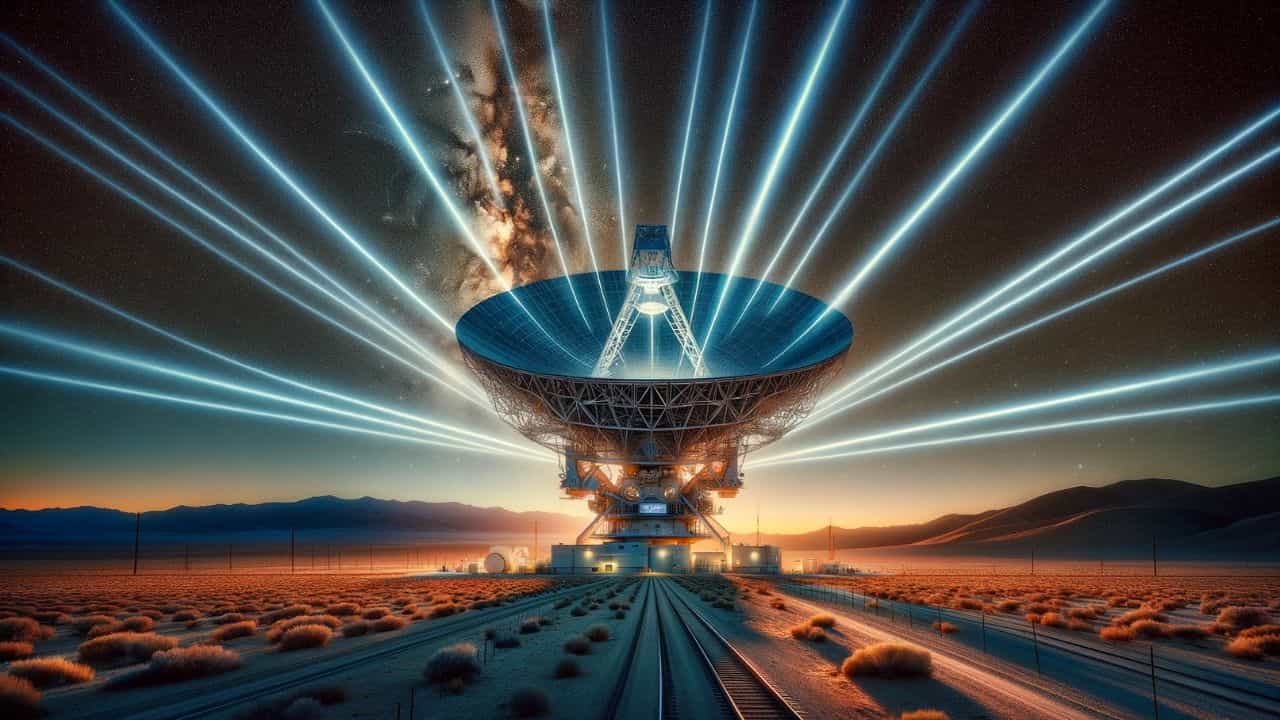NASA is advancing toward practical high-speed communication for deep-space missions by testing a massive hybrid antenna capable of handling both radio waves and laser beams over vast distances of space. A standout feature of NASA’s Psyche mission, aimed at exploring the asteroid bearing the same name, is the Deep Space Optical Communications (DSOC) device. This laser transceiver is designed to send and receive laser signals, offering communication speeds significantly faster than traditional radio frequencies.

Since the launch of the robotic explorer on October 13, 2023, the mission has achieved significant milestones. Notably, in November, the DSOC managed to transmit data over a distance of 10 million miles (approximately 16 million kilometers), which is about 40 times the distance from Earth to the Moon.
However, the connection between Earth and the Psyche spacecraft was established through a makeshift setup. The DSOC targeted the Hale Telescope at the Palomar Observatory in San Diego County, California, utilizing a laser beacon from the Optical Communications Telescope Laboratory at the Jet Propulsion Laboratory’s Table Mountain Facility near Wrightwood, California.
Overview of a Sophisticated System
Describing this system as simple overlooks its complexity, involving various automated tools and the capability to precisely track and connect with a spacecraft located at such a distance that signals require 20 seconds to traverse it. This operation also necessitates the use of two highly valuable astronomical observatories, for which researchers often have to book time years in advance.
NASA’s Pursuit of a Dedicated Solution
NASA aims for a more specialized and lasting solution. In pursuit of this, the agency is developing a unique hybrid antenna. This new technology is intended to be integrated within the Deep Space Network’s three stations, located in Goldstone, California; Madrid, Spain; and Canberra, Australia, enhancing their capabilities for deep space communication.
Overview of the Hybrid Antenna Test at Goldstone
A groundbreaking trial involving a hybrid radio-frequency-optical antenna, known as Deep Space Station 13, has been conducted at the Goldstone Deep Space Communications Complex near Barstow, California. This 34-meter (112-foot) antenna has been equipped with seven highly accurate segmented mirrors, mimicking a telescope with a 3.3-foot (1-meter) aperture. The purpose of these modifications is to capture laser beams from space, which are then concentrated on a specialized receiver. This receiver, a high-sensitivity camera, is positioned on the antenna’s subreflector, hanging over the dish’s center. From there, the signal travels via optical fiber to a cryogenically-cooled detector designed for single photons, enhancing the signal to levels suitable for analysis.
Achievements in Space Communication
NASA reports significant progress with this antenna, highlighting its ability to stay in touch with the Psyche spacecraft. Remarkably, a downlink speed of 15.63 Mbit/s was achieved—this is roughly 40 times faster than traditional radio communication, over a distance of 20 million miles (32 million kilometers). Additionally, the system has the capability to receive radio signals from the spacecraft concurrently.
Future Prospects
The ambition for the hybrid antenna is to maintain connectivity with the Psyche spacecraft even at the vast distance of Mars’s furthest point from Earth, which is approximately 232 million miles (374 million kilometers). Plans are in place to expand the optical mirror array to mirror a 26-foot (8-meter) telescope and to upgrade several of the 14 dishes within the Deep Space Network (DSN). This enhancement will enable the reception of both high-speed laser signals and traditional radio communications.
Innovations in Communication Technology
Barzia Tehrani, the communications ground systems deputy manager and delivery manager for the hybrid antenna at the Jet Propulsion Laboratory (JPL), emphasized the strategic evolution of the DSN. By incorporating optical frequencies alongside the existing radio frequencies, the DSN can significantly improve its operational efficiency. Tehrani notes, “We can have one asset doing two things at the same time; converting our communication roads into highways and saving time, money, and resources.” This innovation marks a significant leap forward in space communication, promising faster data transmission and more efficient use of resources.
Other Links-
- Love in Space- US to Launch Next Moon Mission on Valentine Day
- NASA Unveils a Mind Blowing Super Earth 137 Light-Years Away
- NASA Launches PACE Mission to Study Oceans and Atmosphere
- NASA Reveals: Earth & Cosmic Twin Uncovered?










